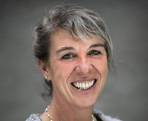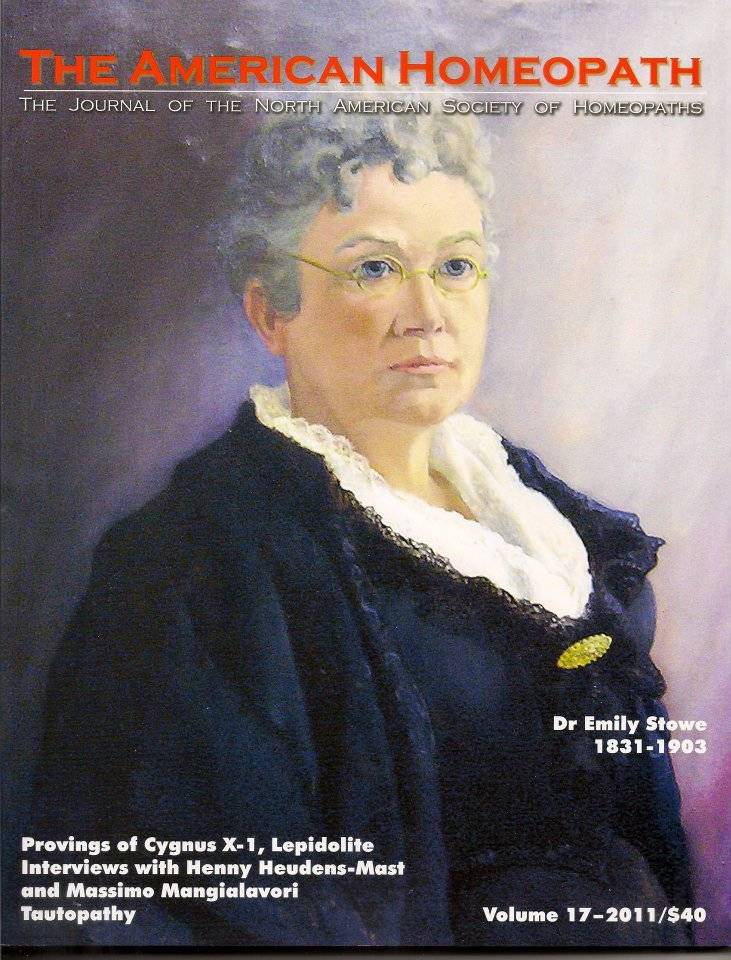 By Myra Nissen, CCH, RSHom(NA)
By Myra Nissen, CCH, RSHom(NA)
BEHIND THE GLASS SCREEN: A HOMEOPATHIC SURVEY OF OZONE by Anne Vervarck (paper back, 192 pages, $26.95, ISBN 918-2-81491-005-0, Published by B. Jain Archibel s.p.r.l.)
The umbilical cord is cut and you are on your own. You have to be strong to become a somebody; a unique being or you won’t exist at all… This is Ozone.
I have had an interest in ozone since I was in high school in Fresno, California. At that time there was a big problem of photosynthetic smog and its effect on not only the health of the people who lived there but also on the agriculture/agribusiness in the area. Concern about the environment stayed with me, and I later earned a graduate degree in environmental studies: Many years later I was given the remedy Ozonum by my homeopath. At the time I didn’t know much about the remedy or homeopathy. However, I always wondered if growing up in a place where ozone was such a problem influenced me in some way.
This year I had the good fortune of attending a seminar by Anne Vervarcke when she was in San Francisco. I bought her book, and later that week was fortunate enough to be able to have a private meeting with Anne, to ask her questions about the book and the remedy. I consider this a serendipitous circumstance, as just a few weeks before I had given Ozonum to a client, the first time I have used the remedy.
Behind The Glass Screen is a book for experienced homeopaths; I appreciated the way she introduced homeopathy and her own Vital Approach method. She used new, refreshing words to explain homeopathy in simple, elegant language that even a layperson could easily understand.
I was intrigued by the breadth of homeopaths who have influenced her: Roger Morrison, Bill Gray, George Vithoulkas, Jayesh Shah, Divya Chhabra, Jan Scholten, Peter Chappell, Harry van der Zee and the Joshis, to name a few.
The introduction of ozone starts with a clear explanation of oxygen, its allotropes-atomic oxygen (0), dioxygen (0), ozone (03), and tetraoxygen (04) – and their environmental ‘and biochemical properties. There is a concise discussion of the “good” ozone protecting the earth’s atmosphere, and the “bad” ozone, which is an irritant to the respiratory system and interpretations of the Periodic Table of the Second Roa I and their keywords for the columns are used to develop a homeopathic picture of Ozonum. Anne conducts a thor~ I and detailed examination of the remedy as it appears in the materia medica.
Part 3 is devoted to cases and it comprises more than b.3 the book. I was pleased to see so many examples of ozone available in one place. Anne helps distinguish between Oznum and Oxygenium by including cases of Oxygenium from Sujit Chatterjee, Jan Scholten and Linda Johnson. Additional information on Oxygenium, needed to build a strong different, is lacking. Oxygenium has not yet been proven.
DISCUSSION WITH THE AUTHOR ABOUT HER BOOK
MN: Tell me about your journey. Why did you choose homeopathy as a profession?
AV: You can call it coincidental. I was in my early thirties working at a vegetarian restaurant. It was hard work. (I was) not earning a lot. I took a few months off. I was going through a journal with announcements of all these trainings. There were so many … I asked myself, what would really want to do? It came down to two things, a system of bodywork analysis therapy or homeopathy. I thought the first was too much responsibility and homeopathy would homeopathy would be easier. “Just another mistake … ” Once I started studying, I found I was incurable. It was so much broader—more than I ever dreamt it was. You can’t get bored …
MN: Where did you study?
AV: That was a problem. In Belgium there were no schools at the time. There was a group who called themselves a school, but it was chaotic. There was a teacher in that school who left and most of the students followed him. I went to him. I started in the third year and studied years one to three full time … then year four. I went to Holland, to a good school, and did my medical year… one-and-a-half more years. And post-graduate study and innumerable seminars with leading homeopaths including Henny Heudens-Mast, Jan Roks, Roger Morrison, Vassilis Ghegas, Jonathan Shore, Ananda Zaren, Jeremy Sherr, Nandita Shah, Bill Gray, Nancy Herrick, and of course Rajan Sankaran. I attended many other classes and seminars, anything I could.
MN: Why did you choose to write about ozone?
AV: I have a lot of ozone cases, as simple as that. I don’t see other people having ozone cases. I think it is because the remedy is (so) familiar. You overlook it. Once you recognize it, read a proving, you begin see other cases, and you have a good result. It becomes part of your repertoire. You recognize it when someone comes in. In the end, it is a very familiar remedy. I went through the process, I studied Anne Schadde; she published a very good proving. I somehow recognized an ozone case based on classical work, a few dreams or single symptoms. Then I gave flesh to the picture by seeing more.
The idea for a book started when a student needed a topic for a thesis. I said there you are. Here are all the cases; here is the proving. All she had to do was assemble everything. We can make a book with your name on it … She made mess of it. It is too bad. It was not like I HAVE to write this book. All the material was there and I thought it would be useful. The book before was The Charm of Homeopathy, a philosophical book. I alternate, this is the theory, this is the practice, like the grammar and the vocabulary of the language…
To me, it is almost like a polycrest. It is such a common remedy. I feel it is overlooked. In the second line we have many common remedies. We hop over ozone, we go to Huoric acid. We don’t use it. Strange isn’t it?
MN: What is the differential between oxygen and ozone?
AV: There are a few oxygen cases and they are not mine. I don’t have oxygen cases. All the cases in the book are source cases; they all need oxygen. There is a need for oxygen. It is only one aspect. Not one person in the ozone cases talks about the ozone layer, so they are not source cases.
Jan Scholten’s book, Homeopathy and the Elements, is the only one who gives oxygen issues and characteristics. Anna Schadde has a nice monograph of the proving of ozone. We don’t have (this) for oxygen. You look in the old books; ozone and oxygen are considered the same remedy. Lacking a proving, Scholten’s is the only information we have. One could say there is more complaining; there is more decay in oxygen cases. There is the image of begging or “the Beggar” in oxygen, but the reason for that is because oxygen is in the 16th column and this applies to all remedies in the 16th column. What he always does is combine the issues of the row and the column and that is why we find it in oxygen. It is reliable but it is not the proving.
MN: Aren’t there provings of oxygen by Clarke, Grimmer, and Murphy?
AV: The information of oxygen indeed from Clarke (compiled in Murphy) makes not much difference between ozone and oxygen. Or even peroxide of oxygen, or inhaling oxygen. So the question is if those are even provings of homeopathic dilutions or the substance pure. It didn’t give me a clear homeopathic picture anyway.
MN: Thank you, this is magical. I am honored that you gave me the time.
AV: You’re welcome.

ABOUT ANNE VERVARCKE Anne Vervarcke has practiced homeopathy for over 30 years. She established ‘The Centre for Classical Homeopathy’ (CKH) in Leuven, Belgium, which organizes a five-year training course, a Postgraduate course, a yearly seminar and an International Training. She created the programs and was teacher and director for 15 years. She also has had a private clinic since 1989. Currently she coordinates international trainings and gives seminars. In Belgium she still teaches in the CKH, gives seminars a few times each year, and runs a monthly Master Class with live cases. You can find out more about Anne at TheWhiteRoom.be.
|
 Reprinted from THE AMERICAN HOMEOPATH, V. 17-2011 by permission of The North American Society of Homeopaths.
Reprinted from THE AMERICAN HOMEOPATH, V. 17-2011 by permission of The North American Society of Homeopaths.
Copyright © 2011 – , Myra Nissen.
Would you like to include this article in your newsletter or website?
You can as long as you include the following blurb with it:
This article was brought to you by Myra Nissen, CCH, RSHom(NA), Board Certified Classical Homeopath. Myra teaches women how to recognize their body’s unique needs and cues and uses Homeopathy to help empower women to take control of their bodies, health and well-being. Find out more, she regularly publishes articles with home care tips for health and well-being in several venues. Visit her blog www.myranissen.com/blog.
